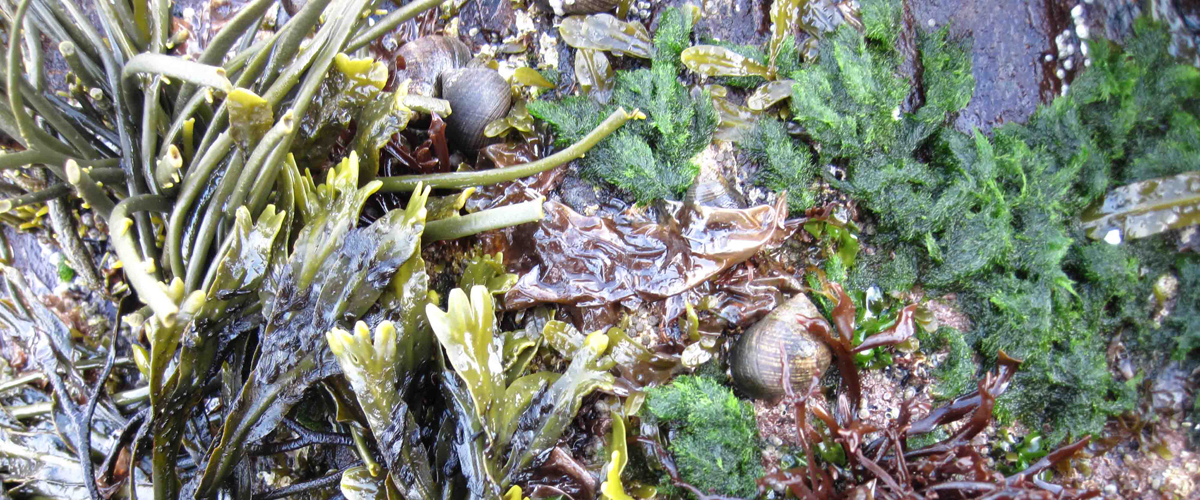In ecology, understanding the processes organizing natural communities across broad spatial scales is often challenging because the influence of local and regional scale processes is poorly understood. The southern Gulf of Maine has been used as a model example of community organization and dynamics for the New England rocky intertidal, but can the classic studies performed in this region be used to create a general model of community organization for the entire Gulf of Maine coastline?
Recent PhD graduate Elizabeth Bryson and her advisor, MSC Director Geoff Trussell, explored this issue with observational data from 34 intertidal field sites along the Gulf of Maine and experimental manipulations of natural communities in the northern and southern Gulf that examined patterns of ecological succession following disturbance.
Their work, recently published in Ecological Monographs, suggests that community organization on rocky intertidal shores in the northern Gulf differ significantly from that in the southern Gulf because of geographic differences in recruitment variation and consumer pressure that are shaped, in part, by differences in regional coastal oceanography. In the south, the presences of consumers, mussels, and barnacles shaped community recovery, whereas in the northern sites, fucoid algae dominated recovery, which in turn supported the abundant establishment of Ascophyllum nodosum, even on wave-exposed shores. Thus, despite hosting many of the same species, regional differences in oceanographic forcing contribute strongly to differences in ecological succession and community organization across the Gulf of Maine.

